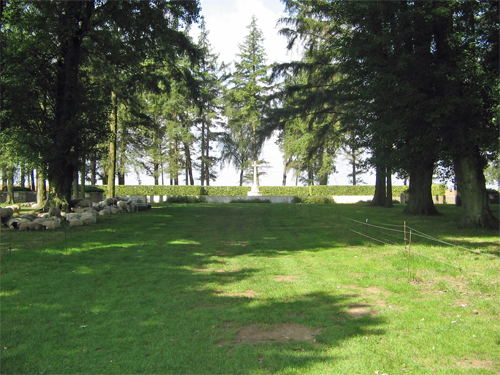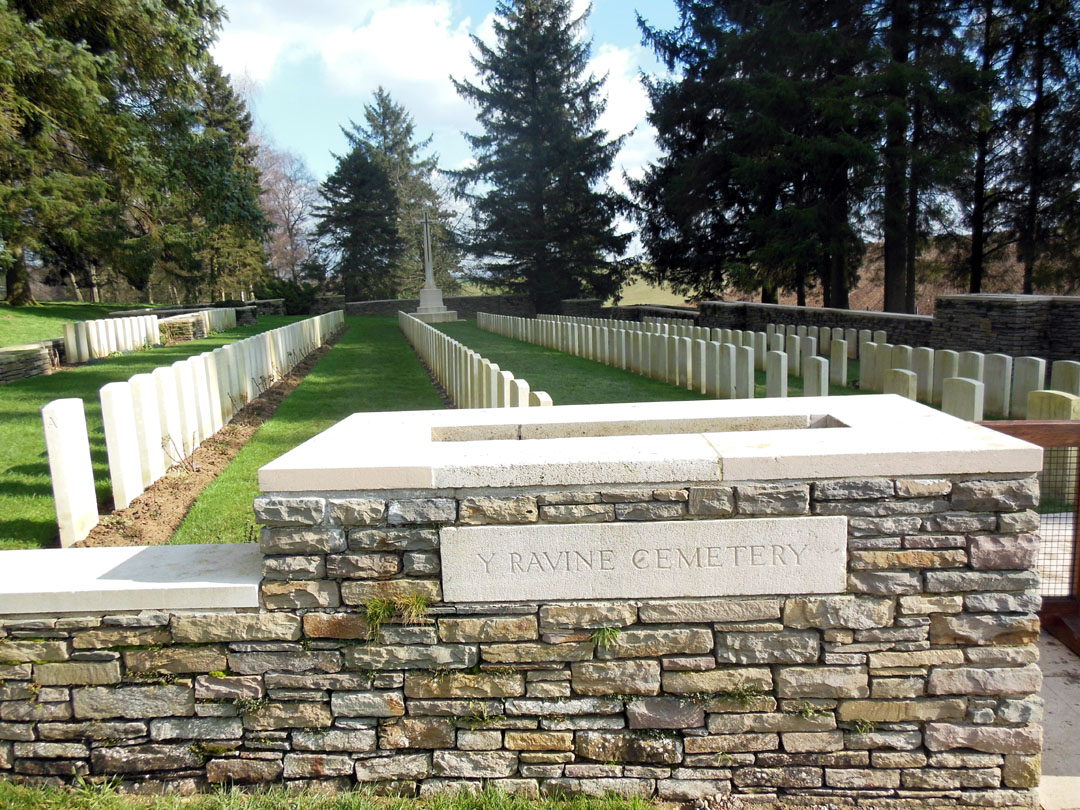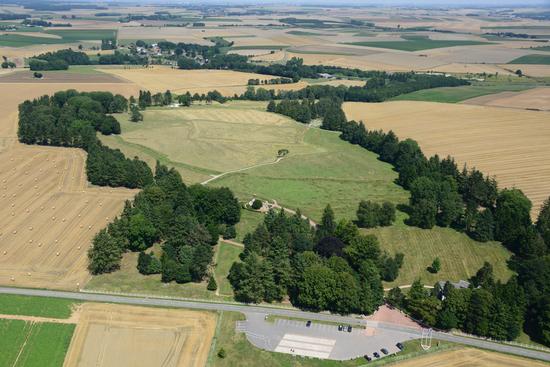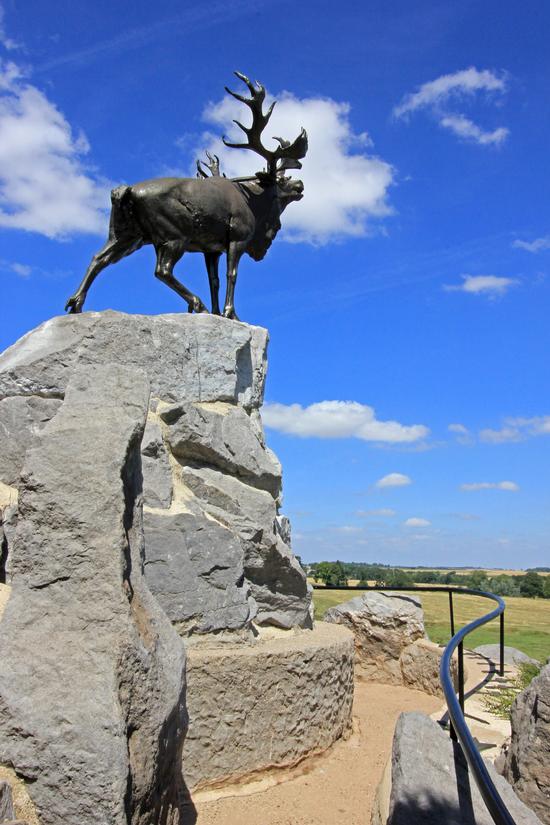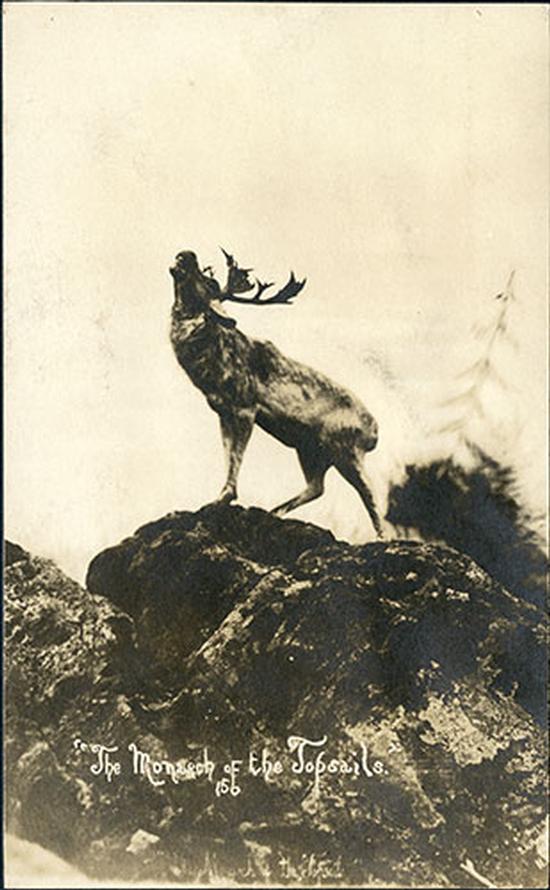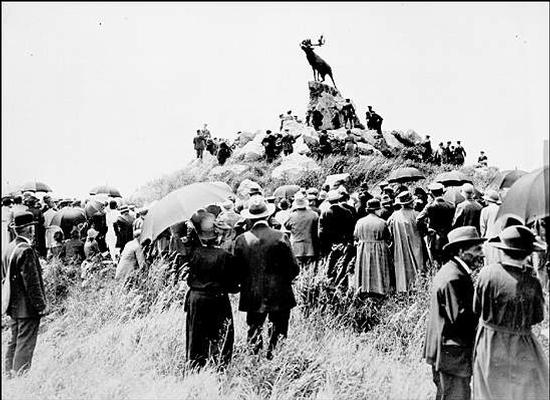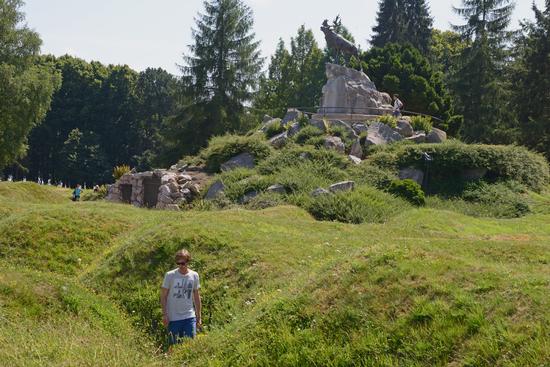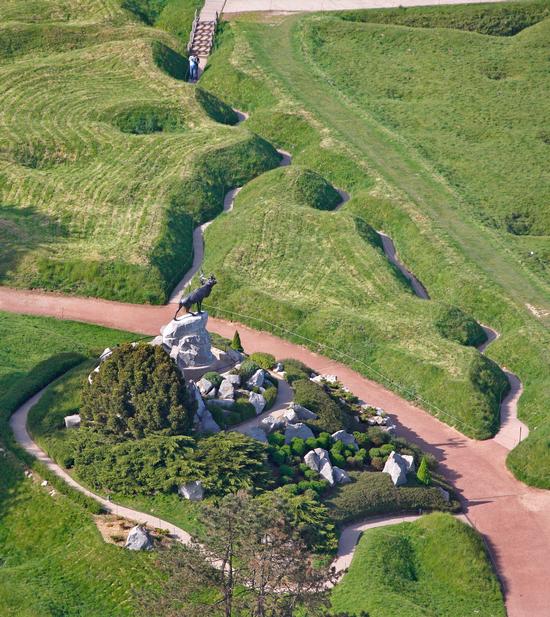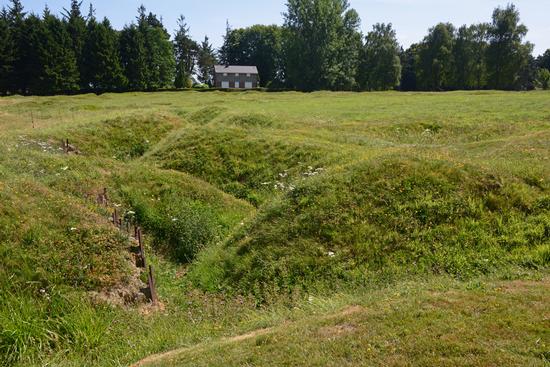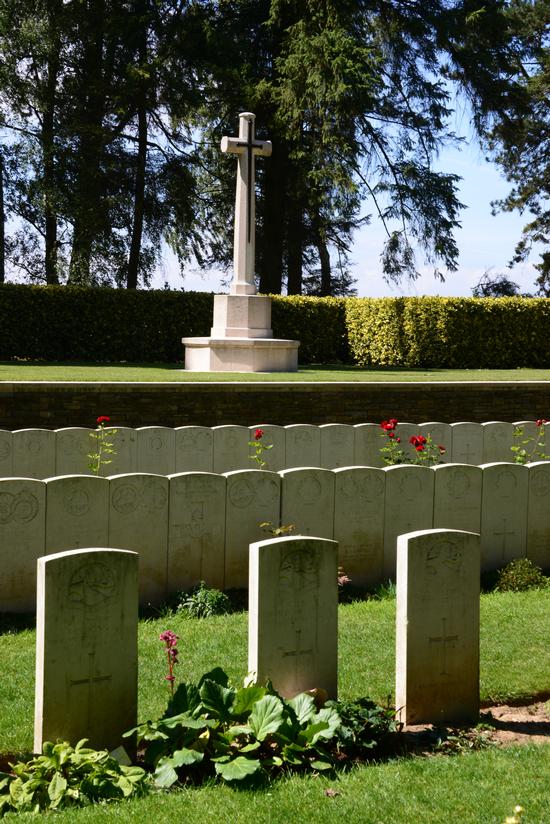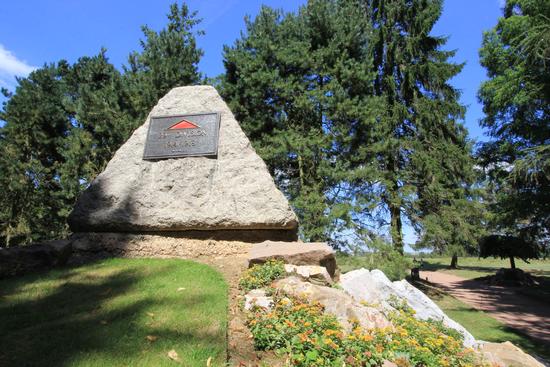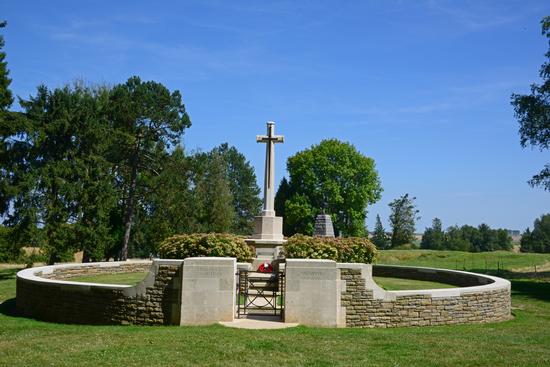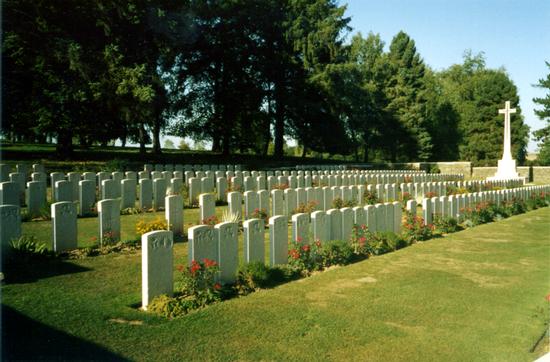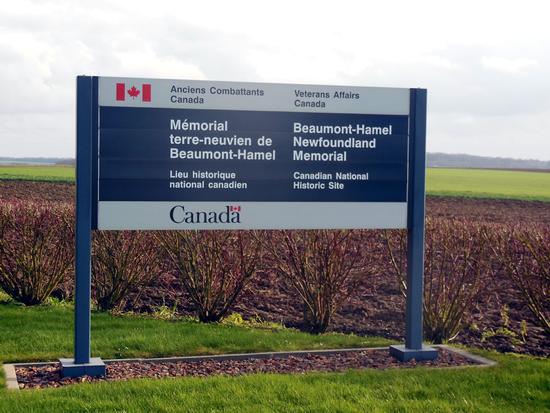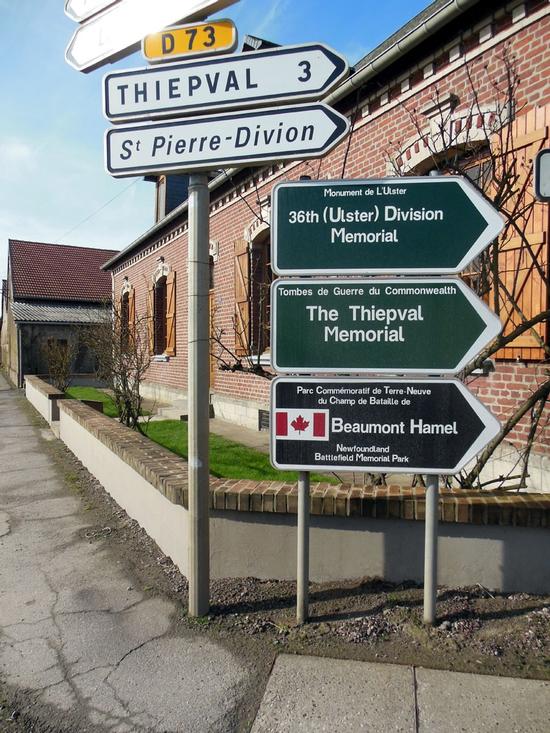
Beaumont-Hamel Newfoundland Memorial
The Beaumont-Hamel Newfoundland Memorial honours all Newfoundlanders who served during the First World War and those lost with no known grave. It is located at the site of the Battle of Beaumont-Hamel.
Table of contents
Standing watch
At the heart of the memorial stands a great bronze caribou (the emblem of the Royal Newfoundland Regiment). Its defiant gaze forever fixed toward its former foe, the caribou stands watch over rolling fields that still lay claim to the many men with no known final resting place.

Battle of Beaumont-Hamel
Most Canadians know July 1st as Canada Day. However, in Newfoundland and Labrador, July 1st has an additional and more solemn meaning – it is also known as Memorial Day to remember the anniversary of the Battle of Beaumont-Hamel.
The Allied plan for 1916 was to make the "Big Push," and the Somme was chosen as the site for a joint French and British assault. It would be on the first day of the Battle of the Somme—near the village of Beaumont-Hamel in northern France—that the Newfoundland Regiment would enter the action.
The battlefield site at Beaumont-Hamel was an obvious choice for a monument as it was a defining moment in Newfoundland history and remains an enduring symbol of the province’s First World War experience.
Did you know?
Newfoundland didn't join Canada until 1949. As a result, Newfoundlanders serving in the First and Second World Wars did so on behalf of the Dominion of Newfoundland as part of the British Commonwealth.
Design and construction
Commemorative efforts in Newfoundland were led by Lieutenant-Colonel Father Thomas Nangle, Newfoundland’s representative on the Imperial War Graves Commission. In July 1919, he was given the responsibility of overseeing the design and construction of each memorial.
The memorial design, featuring a distinctive bronze caribou, submitted by British sculptor Captain Basil Gotto, was selected from among the proposals submitted.
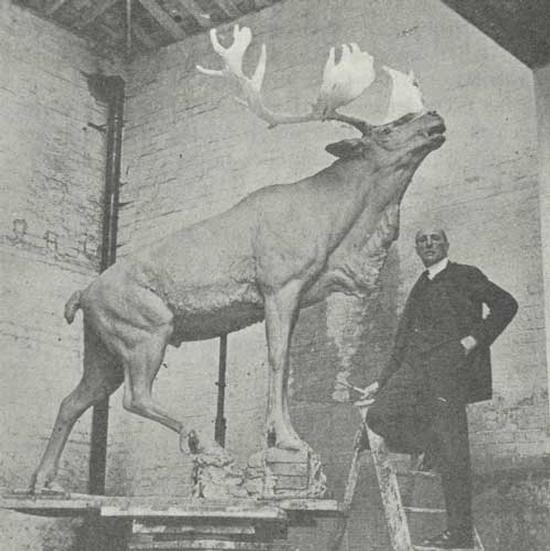
Rudolph Cochius was selected as landscape architect and supervised the design of all of Newfoundland’s overseas memorial sites, as well as Bowring Park in St. John’s.
He incorporated touches from home throughout his designs which include trees native to Newfoundland and Labrador (such as spruce, dogberry and juniper).

The Trail of the Caribou
Six caribou sculptures were cast in total, with one installed at each of Newfoundland’s then five battlefield memorials in France and Belgium and the sixth was installed in St. John’s, at Bowring Park.
In 2021, another battlefield memorial—the Gallipoli Newfoundland Memorial – was installed in Türkiye.
With a bronze Caribou featured at each site, these now six battlefield memorials in Europe are informally known as the Trail of the Caribou. Together they represent some of the most important moments in Newfoundland's First World War experience.
A place of honour
There are 821 names inscribed on three bronze tablets at the base of the monument in memory of Newfoundlanders who died during the First World War with no known grave.
The names include 592 members of the Royal Newfoundland Regiment, 114 sailors of the Newfoundland Royal Naval Reserve and 115 merchant mariners.
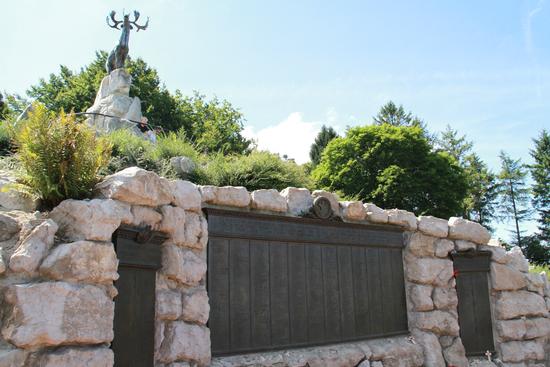
Unveiling and dedication
The Beaumont-Hamel Newfoundland Memorial was officially dedicated on 7 June 1925 by Field-Marshal Earl Douglas Haig. He was Commander of the British Expeditionary Force during the Battle of the Somme.
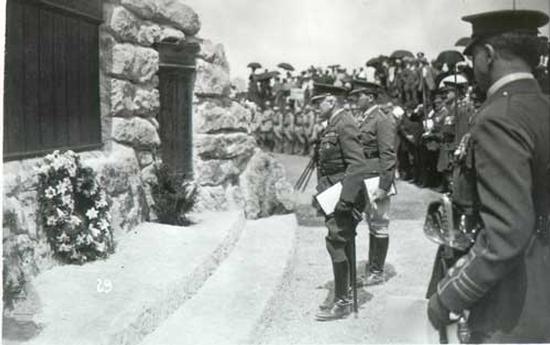
National Historic Site
The memorial was declared a National Historic Site in 1997 and is one of only two historic sites outside of Canada. The second is the Canadian National Vimy Memorial.
Other memorials on the site
The Danger Tree
Located halfway across No Man’s Land, the Danger Tree marked an area of particularly heavy fire and the site of a high number of Newfoundland casualties.
Following the battle, the broken and twisted remains of the tree emerged as an important symbol of the scope and devastation of the fighting. Today, a replica of the original tree stands in its place.
Monument to the 51st (Highland) Division
Unveiled in 1924, the 51st (Highland) Division monument at Beaumont-Hamel recognizes the Division’s capture of the Y Ravine and of both villages during November 1916’s Battle of the Ancre.
This battle was the last great offensive of the Battle of the Somme. A Gaelic plaque on the front of the monument reads La a’Blair s’math n Cairdean, which means “friends are good on the day of battle.”
Monument to the 29th Division
The Newfoundland Regiment served most of the First World War as part of the 29th Division’s 88th Brigade. Formed in early 1915, the 29th Division first saw action in the Gallipoli Campaign of that same year.
They later saw action at the Battle of the Somme on the morning of 1 July 1916. On that day at Beaumont-Hamel, the Newfoundland soldiers wore the Division’s red triangle on their shoulders, as seen on the monument. They also wore the cap badges featuring the Regiment’s caribou emblem.
Cemeteries
Visit the memorial
In person
When you arrive, stop at the visitor centre. The staff can provide information on Canada and Newfoundland's role in the First World War and the many features of this important National Historic Site of Canada. Check the hours of operation.
Visitor information

Location
rue de l'église, D73
80300 Auchonvillers
France
GPS
N50.073611, E2.648056
Visitor centre
Check the bulletin board for the centre's hours of operation and for any site notifications.

Watch a tour
In this video, a student guide takes you on a quick tour of the site.
Virtual tour
Explore the memorial one step at a time, just like you would if you were there. Using its Street View technology, Google has filmed this important national historical site.
Photo gallery
Historic and current photos of the Beaumont-Hamel Newfoundland Memorial
Related information
Fast facts
Discover interesting facts about the Beaumont-Hamel Newfoundland Memorial.
Forest conservation project
Learn more about this conservation project at Vimy and Beaumont-Hamel.
Visit memorials in Europe
Plan a visit to Canada's memorials in Europe.
- Date modified:



